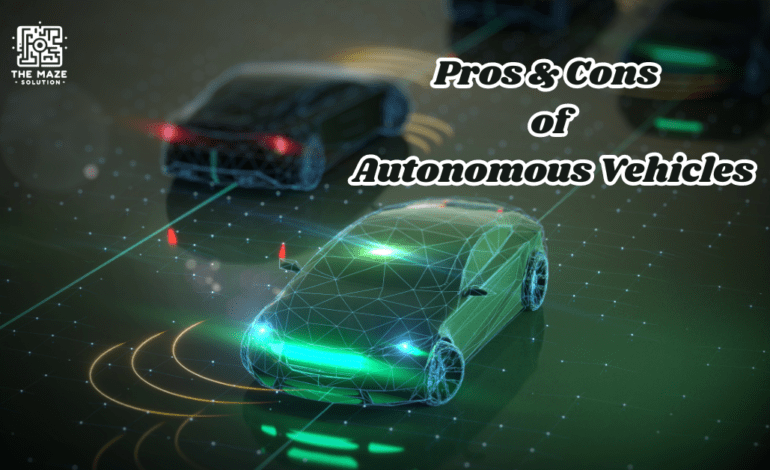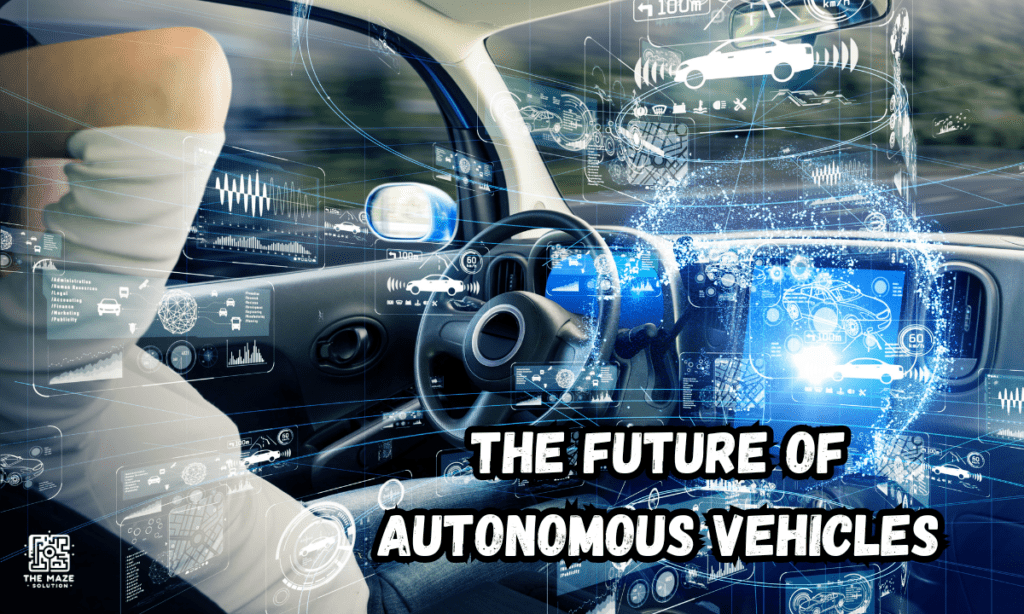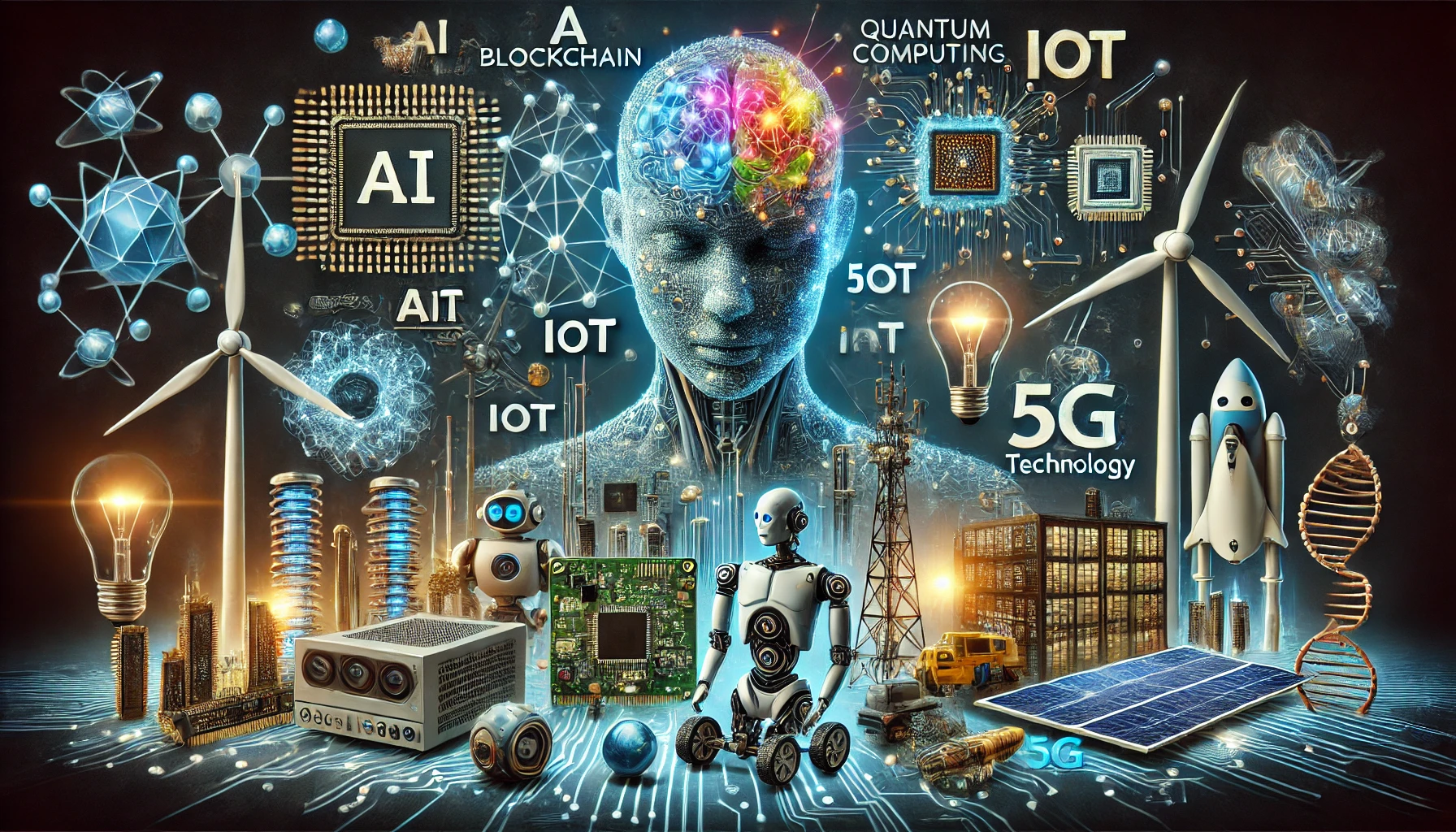The Future of Autonomous Vehicles: Exploring the Pros, Cons, and AI Impact on Transportation

The transportation industry is on the brink of a revolution with the advent of autonomous vehicles. These self-driving marvels, powered by advanced artificial intelligence (AI), promise to redefine the way we travel. From enhancing road safety to reshaping urban infrastructure, the implications of autonomous vehicles are profound and far-reaching. In this blog post, we will explore the current landscape of autonomous vehicles, weighing their pros and cons, and examining the pivotal role AI plays in their development and operation.
What are Autonomous Vehicles?
Autonomous vehicle transformation, often referred to as self-driving cars, are vehicles equipped with technology that allows them to operate without human intervention. These vehicles rely on a combination of sensors, cameras, and AI algorithms to perceive their environment and make real-time decisions. The levels of automation in vehicles vary, ranging from Level 1, where basic driver assistance is provided, to Level 5, where the vehicle can handle all driving tasks independently.
AI serves as the brain behind autonomous vehicle, enabling them to interpret data from their surroundings and make safe decisions. Machine learning algorithms continuously improve the vehicle’s ability to recognize obstacles, interpret traffic signals, and adapt to changing road conditions. Companies like Tesla, Waymo, and Uber are at the forefront of developing autonomous vehicle technology, each contributing unique innovations to the field.
How Autonomous Vehicles Work
The technology underpinning autonomous vehicles is both complex and fascinating. At the heart of these vehicles are sensors, including LiDAR, radar, and cameras, which collect data about the vehicle’s surroundings. This data is then processed by AI systems that use machine learning to identify patterns and make driving decisions.
The interaction between these technologies enables autonomous vehicles to detect obstacles, predict the actions of other road users, and choose the safest and most efficient route. Companies leading the charge in autonomous vehicle technology include Tesla, known for its Autopilot system, and Waymo, a subsidiary of Alphabet Inc., which has been testing self-driving cars on public roads for years.

Pros of Autonomous Vehicles
Safety Improvements
One of the most compelling arguments for autonomous vehicles is their potential to enhance road safety. Human error is a leading cause of accidents, and autonomous vehicles have the potential to significantly reduce these incidents. By continuously monitoring their environment and reacting faster than humans, these vehicles can prevent collisions and save lives.
Efficiency and Convenience
AI plays a crucial role in optimizing routes, reducing travel time, and enhancing passenger convenience. Autonomous vehicles can communicate with each other to avoid traffic jams and select the quickest paths. For individuals unable to drive, such as the elderly or disabled, autonomous vehicles offer newfound independence and accessibility.
Environmental Impact
Autonomous vehicle have the potential to reduce emissions through optimized driving patterns and integration with electric vehicle technology. By minimizing unnecessary acceleration and braking, these vehicles can improve fuel efficiency and decrease overall pollution. Additionally, they hold promise for reducing traffic congestion in cities, leading to more efficient use of roadways.
Cons of Autonomous Vehicles
Safety and Reliability Concerns
Autonomous vehicle promise a future where accidents due to human error are drastically reduced. However, this promise is not without significant risks. One of the primary concerns is the safety and reliability of the technology itself. While autonomous vehicle are equipped with advanced AI and machine learning systems designed to make real-time decisions, these systems are not infallible.
Incidents involving self-driving cars, such as collisions or unexpected malfunctions, have underscored the potential dangers of relying heavily on AI-driven technology. For instance, there have been cases where autonomous vehicles failed to recognize obstacles or pedestrians, leading to accidents that could have been avoided with human intervention. These incidents highlight the fact that while AI can process vast amounts of data quickly, it can still misinterpret complex, real-world scenarios.
Moreover, the issue of over-reliance on AI is critical. As autonomous vehicles become more common, there is a risk that drivers may become too dependent on the technology, reducing their vigilance and ability to react in emergencies. If the AI system malfunctions—due to software bugs, hardware failures, or unexpected environmental conditions—the consequences could be catastrophic. Therefore, it is crucial for manufacturers to continuously test, update, and improve their systems to ensure they can handle a wide range of scenarios safely.
Economic Impact
The introduction of autonomous vehicles also brings significant economic implications, particularly concerning employment. Driving professions, including truck drivers, taxi drivers, and delivery personnel, represent a substantial portion of the workforce globally. As autonomous vehicles become more prevalent, these jobs are at risk of being automated, leading to widespread job losses. This shift could have a profound impact on economies, particularly in regions heavily dependent on these industries.
The transition to autonomous vehicle will likely require extensive retraining and support for displaced workers. Governments and businesses must collaborate to develop strategies that help workers adapt to new roles in the economy, possibly in areas related to technology, maintenance of autonomous systems, or other emerging fields.
Additionally, the financial burden of developing and maintaining autonomous vehicle technology is considerable. The research and development costs are high, as companies must invest in cutting-edge technology, rigorous testing, and safety certifications. These costs can be a barrier to entry for smaller companies, potentially leading to market consolidation where only a few large corporations dominate the autonomous vehicle industry. This consolidation could limit competition and innovation, further complicating the economic landscape.
Privacy and Ethical Concerns
Autonomous vehicles are equipped with a vast array of sensors and cameras that constantly collect data about their surroundings, including other vehicles, road conditions, and pedestrians. While this data is essential for the vehicle’s operation, it raises significant privacy concerns. The information gathered can include sensitive details about individuals’ locations, behaviors, and even conversations within the vehicle. If this data falls into the wrong hands or is used improperly, it could lead to severe privacy violations.
Beyond privacy, there are also profound ethical concerns associated with autonomous vehicles. One of the most challenging aspects of programming AI for self-driving cars is decision-making in life-and-death situations. For example, if an autonomous vehicle is faced with a scenario where it must choose between hitting a pedestrian or swerving into oncoming traffic, the AI must make a split-second decision that could result in loss of life. The ethical implications of these decisions are complex and have sparked significant debate among ethicists, engineers, and policymakers.
Who is responsible if an autonomous vehicle causes harm— the manufacturer, the software developer, or the vehicle owner? These questions remain largely unanswered and represent a significant hurdle for the widespread adoption of autonomous vehicles. Addressing these ethical dilemmas will require careful consideration, transparent decision-making processes, and possibly new legal frameworks to ensure that the deployment of autonomous vehicles aligns with societal values.
The Impact of Autonomous Vehicles on Society
Urban Planning and Infrastructure
The widespread adoption of autonomous vehicles could reshape cities and transportation infrastructure. Urban planners must consider how these vehicles will interact with existing roadways and public transportation systems. New regulations and standards are needed to ensure the safe integration of autonomous vehicles into urban environments.
Impact on Public Transportation
Autonomous vehicles could complement or compete with traditional public transportation systems. While they offer flexibility and convenience, their widespread adoption may lead to reduced demand for buses and trains. Commuting habits and patterns could shift, prompting cities to rethink their public transportation strategies.
Legal and Regulatory Challenges
Current legal frameworks are ill-equipped to address the complexities of autonomous vehicles. Governments must develop new regulations to ensure safety, liability, and ethical standards. International cooperation is also essential, as autonomous vehicles are likely to operate across borders and jurisdictions.
The Role of AI in Shaping the Future of Autonomous Vehicles
AI-Driven Innovations in Autonomous Vehicles
The rapid advancement of AI technology is driving the evolution of autonomous vehicles. AI systems improve vehicle decision-making by processing vast amounts of data and adapting to real-time situations. Innovations such as enhanced perception and predictive analytics are enabling autonomous vehicles to operate more safely and efficiently.
AI’s Role in Enhancing Safety and User Experience
AI enhances safety by predicting and responding to potential hazards. Advanced driver-assistance systems use AI to alert drivers to dangers and take corrective actions when necessary. Additionally, AI-driven features personalize the user experience, offering tailored entertainment, navigation, and comfort settings.
The Future Outlook for Autonomous Vehicles
Predictions for the Adoption of Autonomous Vehicles
While the timeline for widespread adoption of autonomous vehicles is uncertain, experts predict significant advancements within the next decade. Market penetration will depend on overcoming technical, regulatory, and societal hurdles. Innovations in AI and technology will play a pivotal role in accelerating adoption.
Long-Term Societal Impact
The integration of autonomous vehicles into daily life will bring about broader societal changes. Reduced traffic congestion, improved accessibility, and environmental benefits are just a few potential outcomes. Policymakers must consider these factors when shaping future transportation policies and planning.
Conclusion
Autonomous vehicles represent a paradigm shift in transportation, offering both exciting opportunities and formidable challenges. The potential benefits, from enhanced safety to environmental sustainability, are substantial. However, addressing safety, economic, and ethical concerns is essential for realizing their full potential. AI is at the forefront of this revolution, continuously shaping the future of autonomous vehicles. By staying informed and engaged, stakeholders can help guide this technology toward a safer and more efficient transportation landscape.





